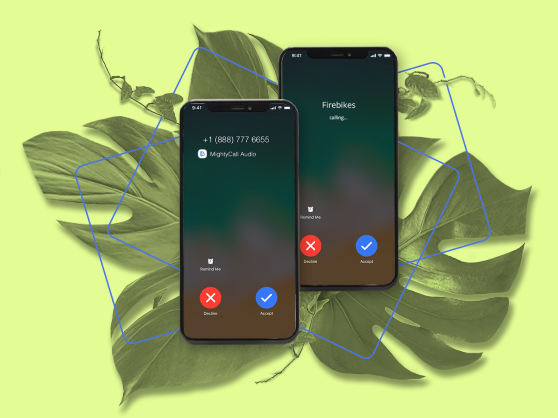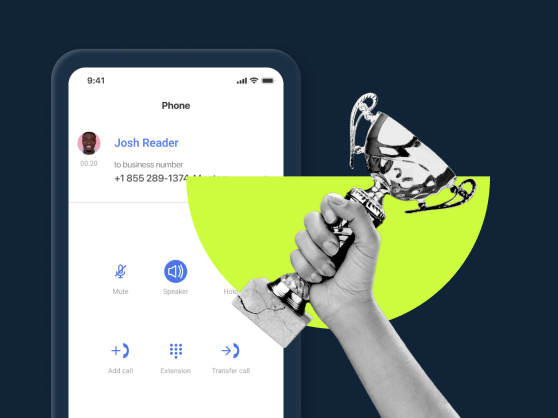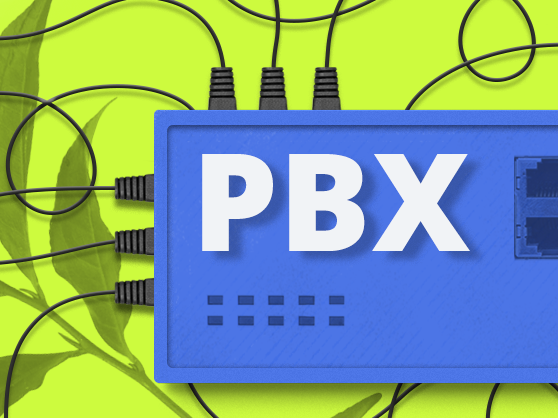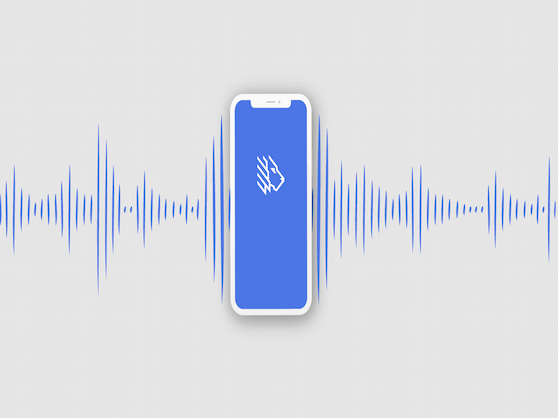BellSouth introduced Caller ID in America in July 1984 when it unveiled the service in Orlando, Florida. More than 30 years later, Caller ID is entrenched in American society and used by millions of residential and business users nationwide.
Caller ID, in its simplest form, enables users who receive phone calls to see the phone numbers of the parties who call them. Consequently, caller ID is both a useful tool and a potential security concern at the same time. In this post, I will detail how some of the uses of caller ID may affect your privacy.
Privacy for the Called
Today, most residences and businesses use phones with caller ID. Additionally, virtually all mobile phone support caller ID. This means that almost any phone you use supports the Caller ID feature and enables you to view or screen numbers before answering.
Of course, the best thing about caller ID is the obvious — it allows you to see who’s calling. Knowing who’s calling you gives you a choice — to answer a call or not depending upon who’s calling and whether you want to talk to them. From this standpoint, you are able to safeguard your privacy and only answer calls from parties with whom you want to speak.
Naturally, since most lines support caller ID these days, the person calling you is probably aware that you can see his/her number on your phone display. However, the person calling you has no way of knowing whether you are near your phone if you choose not to answer. Although, the caller might assume you are not answering a call intentionally, he/she has no way of knowing conclusively that this indeed the case.
Privacy for the Caller (Caller ID Blocking)
As I mentioned above, a person receiving a calls is able to view the number of the calling party under normal circumstances. When this happens, privacy (from the standpoint of the person receiving the call) remains intact because he/she retains the option not to answer and to be left alone.
Just as caller ID provides parties receiving calls with privacy, though, phone companies are obliged to provide an equal level of privacy to parties making calls (unless the party on the receiving end is paying for the call.) Consequently, phone service providers usually enable callers to disable the caller ID feature on the receiving end of the call by blocking it.
Generally speaking, there are a couple of different ways callers can block their number from being displayed with caller ID: per-call blocking and per-line blocking.
As its name implies, per-call blocking enables the caller to block his/her number from being displayed on caller ID devices on a call-by-call basis. With most providers, the caller needs only to dial
*67 before dialing the telephone number to block the call from being displayed on the receiving party’s phone. This option works well for users who only have occasional concerns about privacy and generally don’t worry about revealing their numbers to most parties they call.
While per-call blocking provides a temporary privacy solution for callers, per-line blocking provides a more permanent one. With per-line blocking, the caller does not need to dial any special number or take any action to prevent his/her number from being displayed on the receiving party’s caller ID device. To the contrary, if a caller with per-line blocking wants to reveal his/her number to the person with caller ID, he/she must dial *82 before dialing the phone number of the receiving party.
Depending on the market in which you reside or do business, the blocking features mentioned above may be known by other names. In some markets, per-line blocking is known as “Selective Blocking” and per-line blocking is called “Complete Blocking.” Regardless of the name used, though, the blocking options are essentially the same in all markets.
Blocking Exceptions
In most cases, blocking caller ID can hide your numbers from parties you call. However, this is not always the case. Under FCC guidelines, there are several exceptions to caller ID blocking when you cannot hide your number no matter what.
For instance, if you call a toll-free number (such as those that begin with 800, 844, 855, 866, 877, 888 and even 900,) blocking does not work. This is because as the party paying for the call , the receiver has the right to know from which number the call originates. You should note that even though you pay a per-minute surcharge to call 900 numbers, the receiving party also pays a toll charge to the phone company (hence, they can see your number.)
With toll numbers, your number will always be revealed even if you have a blocking feature enabled. Therefore, if you don’t want your home or other personal number known by a company with a toll-free number, be sure to call from an alternate phone.
If you need to call an emergency service, like 911, you should be aware that you cannot hide your number with caller ID blocking as well. Not only can emergency services see your number when you call, they can usually see your address as well. This information must be displayed in order to send emergency aid to your location when needed. Therefore, both federal and state laws prohibit any type of blocking when calling emergency service numbers.
It’s also important to note that FCC regulations prohibit telemarketers from blocking caller ID information when calling your home. If you receive a call from a telemarketer who doesn’t display caller ID information, be sure to report them to the FCC by filing a complaint. For more information on FCC rules regarding caller ID, check out the Truth in Caller ID Act on the FCC website.
Choosing a Blocking Feature Option
With a couple of different blocking options available, you may be wondering which one is really best for you. Well, the blocking method you choose will depend on a couple of things: the type of calls you make and the importance you place on your personal privacy.
Per-Line Blocking
Overall, per-line (or complete) blocking provides the most privacy, as it does not require any interaction from you to use. Additionally, per-line blocking is always on, which means you cannot forget to enable it inadvertently. In fact, the only way to disable per-line blocking is on a call-by-call basis. Therefore, if you want to ensure that your phone number is always blocked on caller ID displays (unless you enable it intentionally,) then the per-line blocking option is the one for you.
Here are some situations in which per-line blocking may make the best sense (Note ideas from PrivacyRights.org):
- You have an unlisted number and are concerned about the privacy of your phone number;
- You are (or have been) a victim of domestic violence, stalking or another form of harassment and need to block your number at all times;
- You work in a profession in which the privacy of your home phone number is very important — such as a physician, mental health care provider, teacher, law enforcement official, judge, entertainer or government employee;
- You operate a domestics violence or other type of safe home;
- You do a lot of price shopping by phone and don’t want companies to gain access to your number for marketing purposes;
- You often have visitors to your home who might use your phone (i.e. babysitters, friends of children, relatives and other guests.) In these cases, you may not want your number to be revealed to others;
- You are generally very conscious of your privacy and want to safeguard it as much as possible.
Per-Call Blocking
With per-call blocking (or selective blocking,) you must initiate the block before placing your call. To prevent your number from being shown on caller ID displays, you must dial *67 before dialing the number. Once you do this, your number will not be visible to the party receiving the call (unless it is to a number that prohibits caller ID blocking.) After you dial *67, you will hear a “stutter” dial tone indicating that you can then dial the number you wish to call normally.
In contrast to stricter per-line blocking, per-call blocking is for users that don’t place as much emphasis on the privacy of their phone numbers. With many providers, there is a charge for per-line blocking that users with fewer privacy concerns may not want to pay. So, if you experience few (or none) of the risks outline in the per-line blocking section, per-call blocking may be a better option for you.
Here are a few situations in which per-call blocking may be a better option:
- Most of the people you call are friends or family. Since most people who have caller ID want to see the number of the calling party, you want your friends and relatives to know it’s you who’s calling;
- You live alone and don’t have many visitors. Additionally, you are careful to use per-call blocking when applicable;
- You don’t make many calls to businesses or for shopping and are not too concerned about revealing your number to the parties you call.
Making Your Choice
Many telephone companies offer a toll-free number you can call to make your blocking selection. After you make a selection, you should receive a confirmation from your telephone company. If you do not make a selection, you will usually be given per-call blocking by default. Therefore, if you wish to use per-line blocking (which is by far the stronger of the two options,) make sure to contact your phone company and select it.
Spoofing Concerns
While caller ID is useful for a variety of reasons, it is also relatively easy to subvert. Using one of several different methods, hackers or other unscrupulous persons can fake the number displayed on caller ID devices when they call. This is known as “spoofing.”
Under the Truth in Caller ID Act, malicious acts of spoofing are illegal. Nevertheless, its practice is commonplace. According to PCWorld, caller ID is easy to spoof and leads to multiple types of threats that can range from account fraud to pranks and marketing scams.
There are a few legitimate uses for spoofing. For instance, a victim of domestic abuse may choose to spoof caller ID in order to hide his/her real number and location. Other times, businesses may want to spoof their numbers to encourage callbacks to certain lines. Nevertheless, spoofing is often used for illegal or illicit purposes.
There is currently no device or service in place to determine if a number has indeed been spoofed. Consequently, the only way to safeguard yourself against spoofing is not to trust caller ID displayed numbers 100 percent and request a callback number from the calling party if in doubt. If the number displayed on the caller ID device is genuine, you should be able to use it to contact the calling party. If the number goes to another party, there is chance that the original number may have been spoofed.
Other Privacy Considerations
One important thing you need to remember about caller ID is that it can record your number even if no one answers the phone. Additionally, depending on the types of features that the receiving party has with his/her line, he/she may also be able to see your number with call waiting. Therefore, if you want your number to be hidden from the receiving party, always use a blocking option — even if you suspect the other person is on or away from the phone.
If privacy of your phone number is really important to you, then you should also consider making your number “unlisted.” Unlisted numbers are not published in the phone book and not available from directory assistance. Don’t confuse “unlisted” numbers with “unpublished” ones. Unpublished numbers, while not listed in the phone book, are available with a simple directory assistance (411) call.
If your home has more than one number, remember to choose a blocking option for each line. A blocking option selected for one line will not roll over to others — even in the same location.
If you don’t want to receive calls from “blocked” numbers, ask your phone company about Anonymous Call Rejection (ACR.) ACR programs your phone to reject calls from blocked numbers automatically. ACR, sometimes known as Block the Blocker, plays for the caller an announcement that informs him/her that the number does not accept calls from blocked numbers. ACR also informs the caller that if he/she wants to call you, he/she must first unblock their number and then call again.
If you do receive a harassing or threating call from a blocked number, you can use the Call Trace option to allow the phone company to record the number, date and time of the call. If you receive a call you want to trace, dial *57 immediately after hanging up with the caller.
With Call Trace, you will not be given the phone number. However, the phone company will ask you to sign an authorization that allows them to turn over the call information to law enforcement for investigation. Call Trace works regardless of the type of blocking option enabled by the caller. Most phone companies do charge a fee for Call Trace.




























